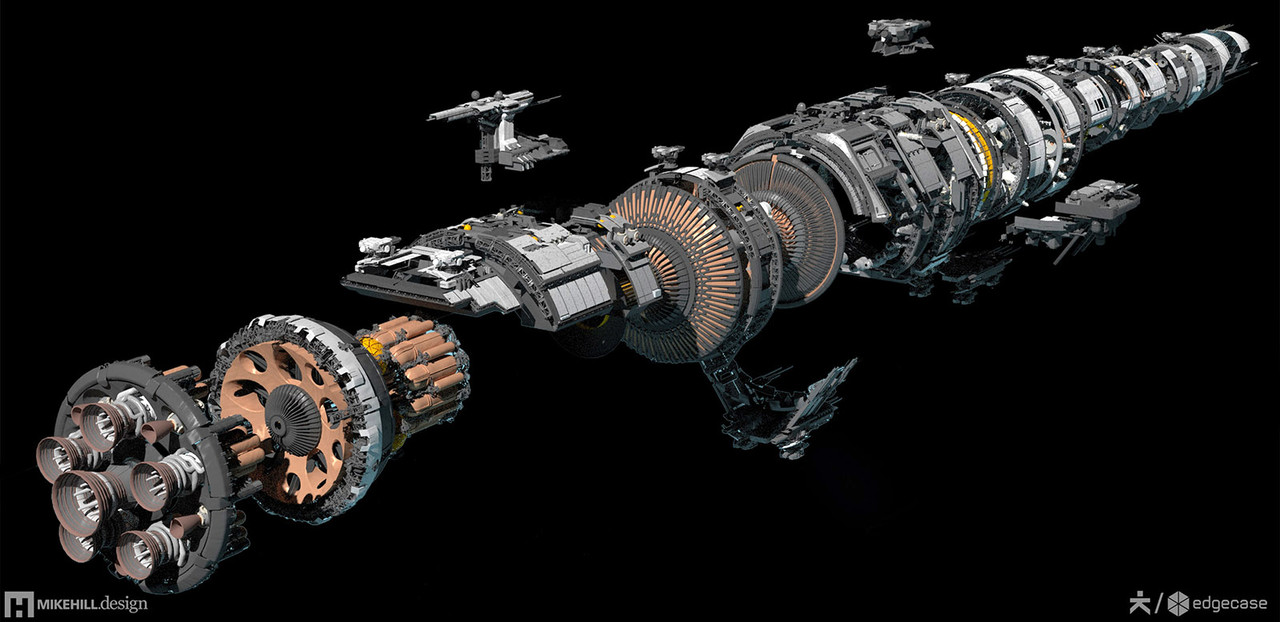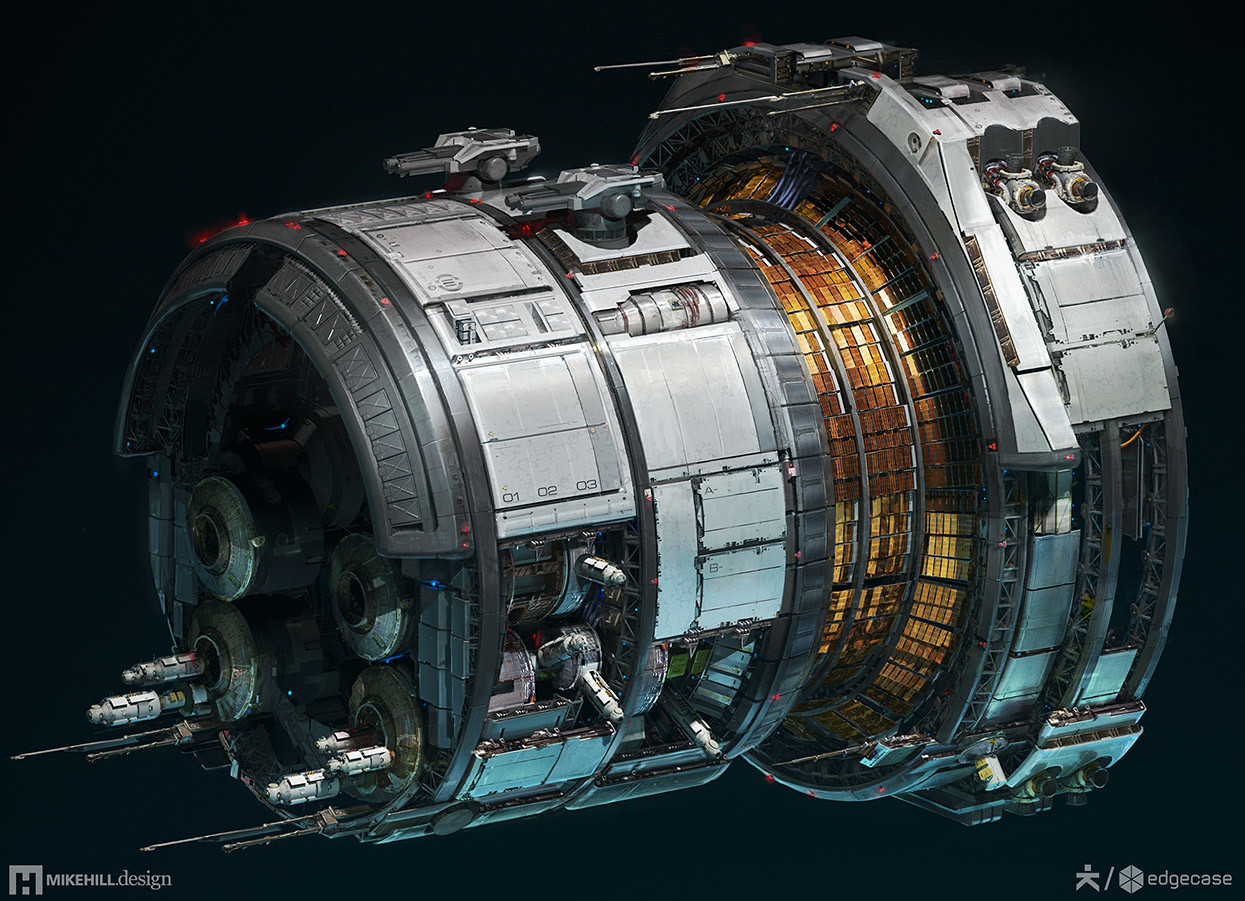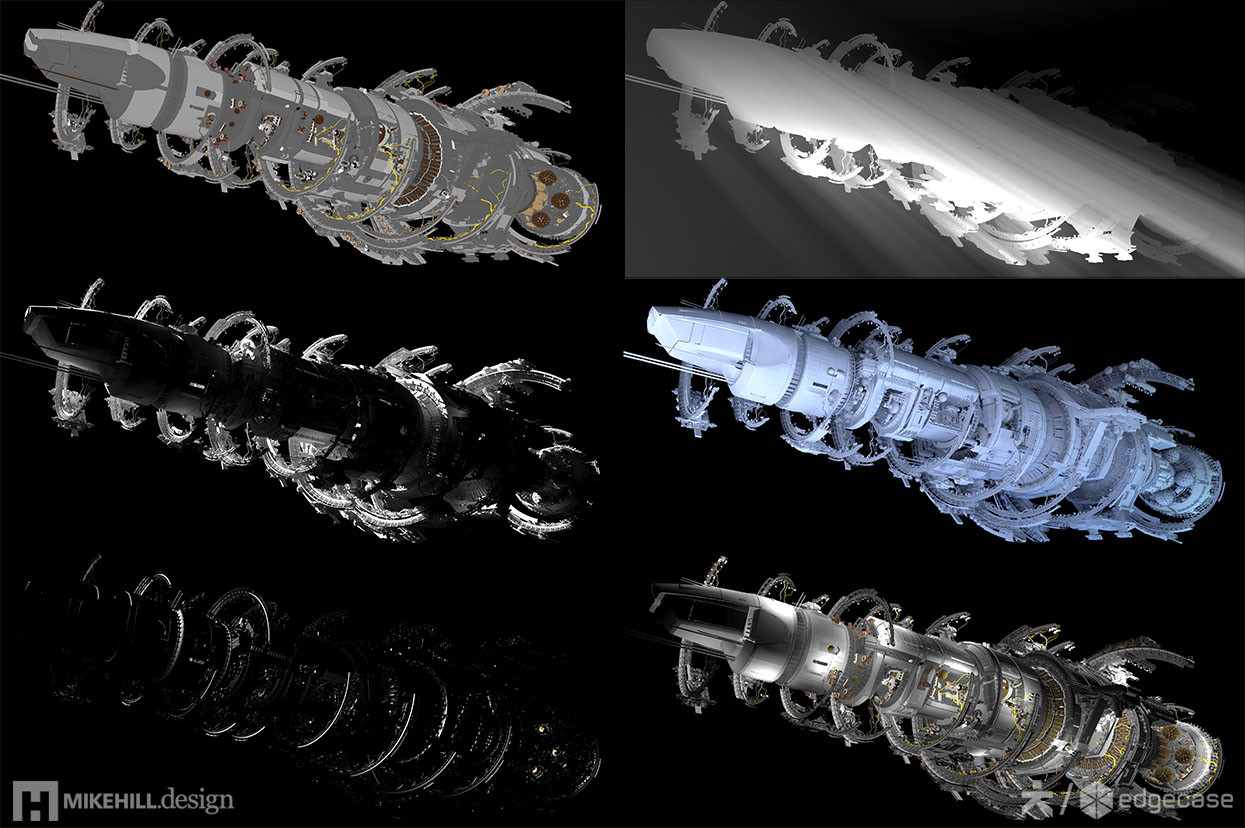In 2014 I provided Edge Case Games with concepts for Fractured Space. At the time, the game was in a pre-beta stage – gameplay was locked down, but the team needed spaceship designs that felt genuinely manufactured and massive.
I was brought in to create convincing, engineered mega-ships for two of the game’s factions – United Space Research (USR), and Zarek Industries – fictional, militarized versions of NASA and Maersk, respectively.
opposing factions, opposing values
Several in-depth conversations with Dan Lodge, the project’s Art Director, revealed that the conventional concept art route – i.e. painting in 2D and working with thumbnails – wasn’t developing believable designs.
I proposed a process that involved establishing core values for the two factions and then to work straight into 3D without any sketches or paints.
I was given background information about the factions and after sifting through reference I isolated some design themes that would be the consistent theme for each faction: Cylindrical modules for the USR – and brutal cubist geometry for Zarek Industries.
Sculpting Cylinders
I know that the USR will be utilizing a cylindrical module system – so I start with a basic cylinder, carefully dividing and sculpting until the shape of the ship begins to emerge. I throw in basic stock components from old files so it doesn’t feel too abstract.

With the design getting progressively more massive, I create annotated screenshots that keep my “to-do” list manageable. This is essential – the design is going to be over a KM long – as I zoom in to work on things at a human scale the ship becomes abstracted and I need to maintain a “birds eye” view with the screenshots.

I subdivide the design, carefully making shape adjustments to avoid it looking like a giant sausage. Dan is an essential pair of fresh eyes during these stages. I apply materials to get a better visual sense of the final design.
Organizing the modules
6600 components and 11.5 millions polygons later, the overall design is in place. It is however a bit overwhelming to anyone who is not familiar with the file setup so I begin a cleanup.
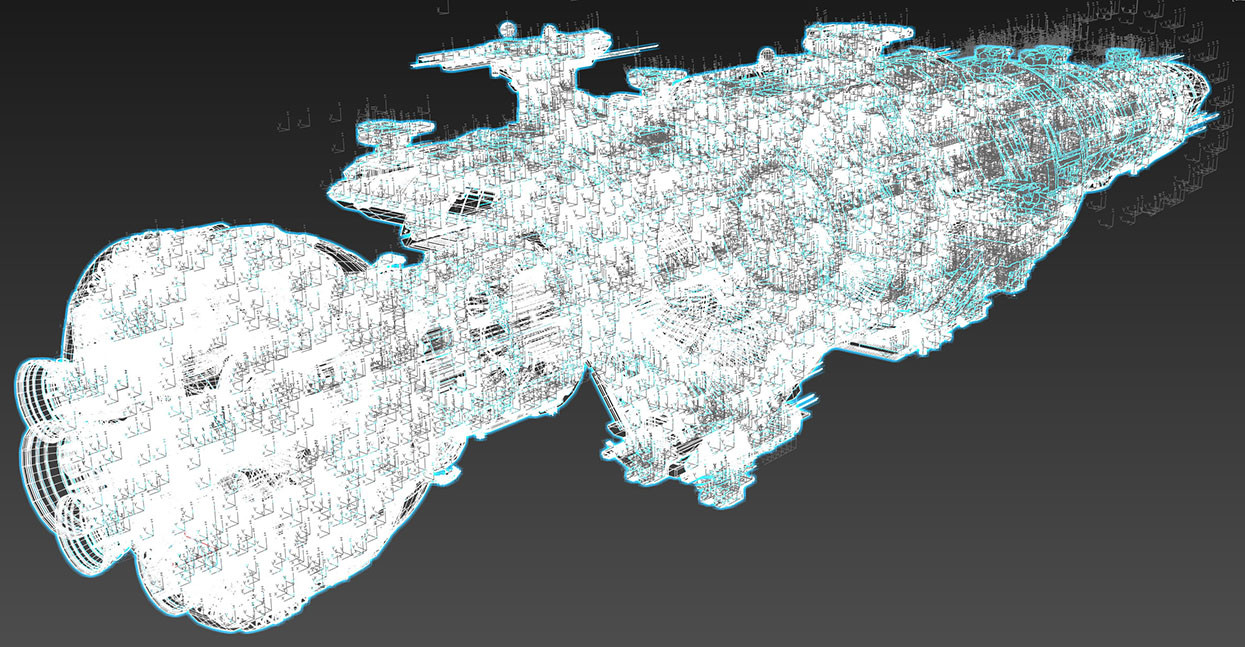
I break the design up for the Edge Case team so they can clearly interpret the modular sections. These blocks can be reorganized along the central pivot – this way Edge Case can create many designs with the created parts.
I hand off the 3D file in chunks to Hans Palm and the team – they begin the gargantuan task of optimizing and remodeling the design so that it can work within the performance parameters of the UE4 game-engine.
Structure to Surface - material and texture
While the team gets familiar with the mesh and its construction I start exploring the design’s aesthetics at a variety of scales – this is to provide creative and technical material that will help with getting the design in-engine. First up I produce macro renders to visualize the ship under physical lighting conditions.

The renders give me a sense of scale – and I weigh up the best way to execute “details” for the texture artist. The big issue is displaying the correct density of texture so they visually support the ship’s size from the player’s perspective.
Macro to Micro
The team will need a “toolbox” from me that helps them create more USR ships beyond the Flagship. I close in on a selection of modules that have a variety of materials – with this area fully concepted, the team will have a transferable visual guide for USR materials.

I render several plates individually, such as reflection, specular, ambient occlusion and diffuse. I can then composite them in Photoshop with complete control. When the values are working together, I add photo reference and hand paint specific details to bring the module to life.
Space Ships, Space Scenes
The guys wanted to see the design in context, so I was briefed with turning the model into an illustration that would show the design being maintained at a space port.
It was important that the ship be the center of attention, so I took care to make the port itself follow the circular design language without overwhelming the ship.
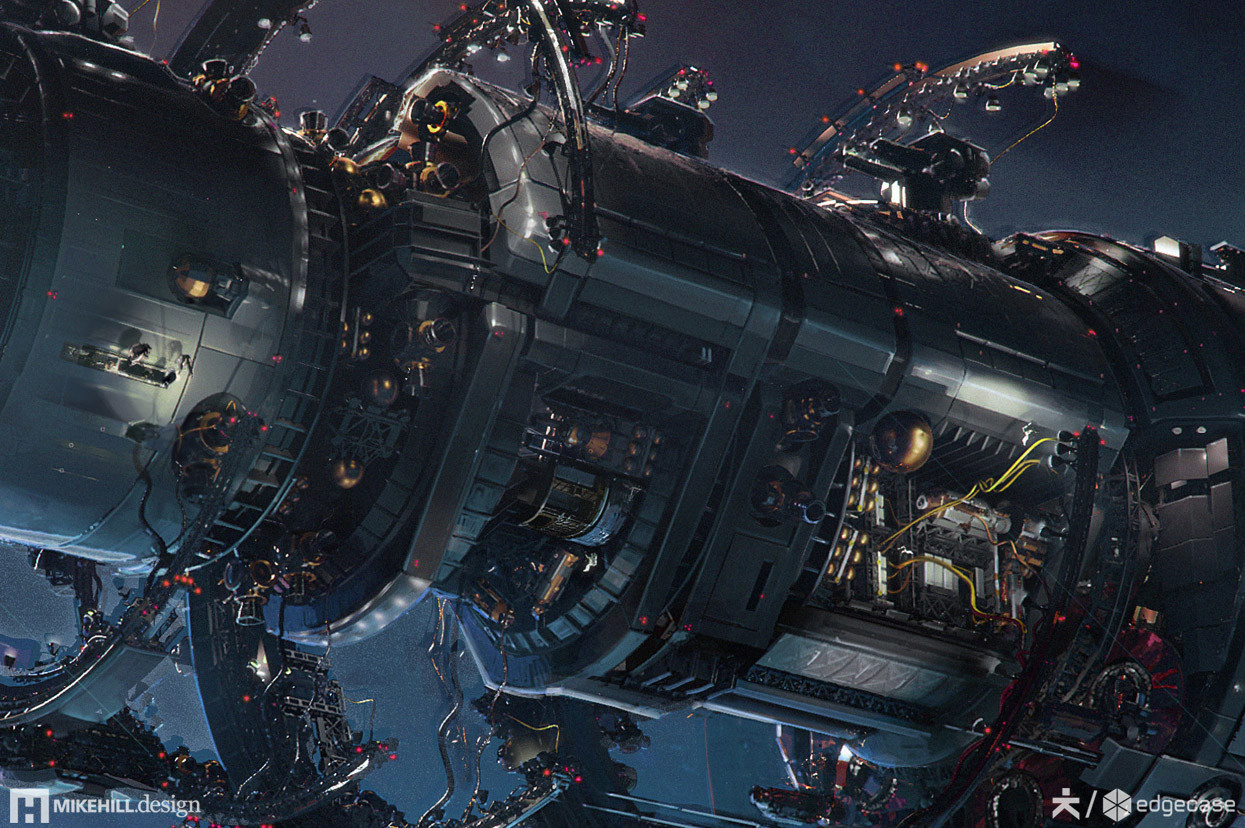
The renders provide lots of detail for the team – but with an upcoming games conference approaching, I re-purpose the renders for splash screens and backgrounds. Dan has a great idea to show foreground astronauts in daily business of maintaining a ship to give it a sense of scale.
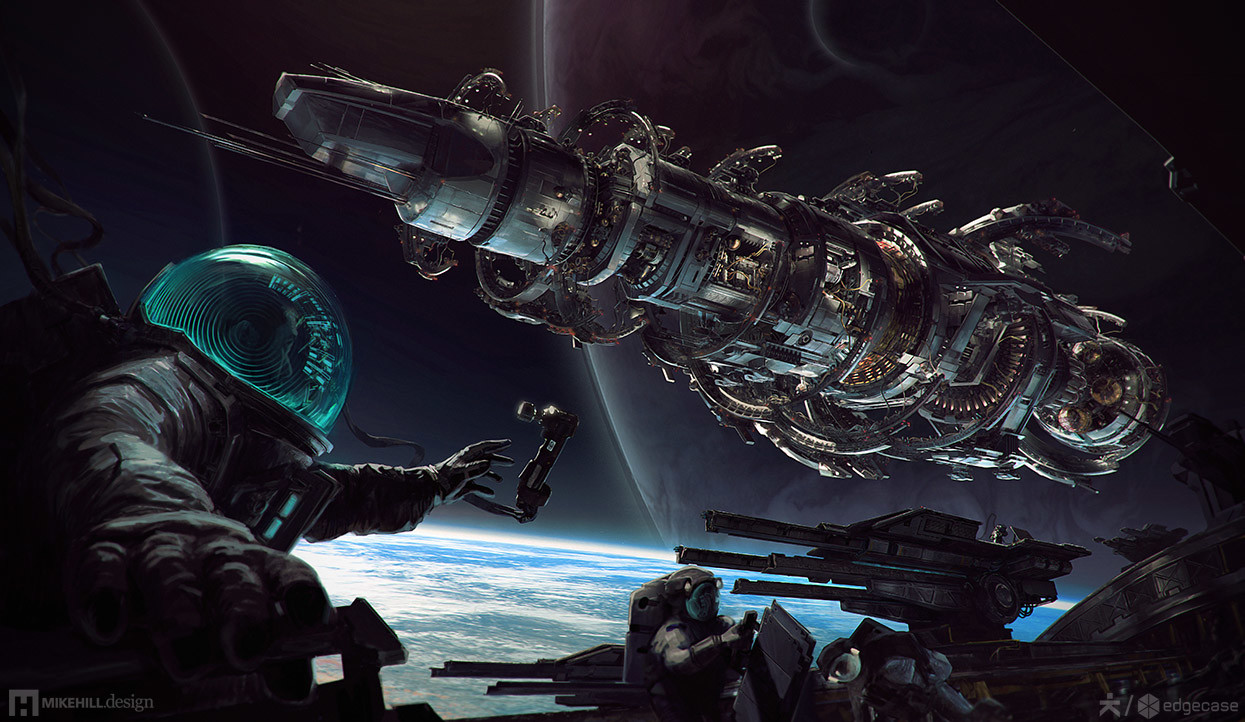
Working with the guys at Edge Case Games was an absolute pleasure – I’ll be showing more background info from other Fractured Space ships in the near future.




